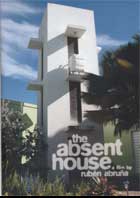
The Absent House 2014
Distributed by Icarus Films, 32 Court St., 21st Floor, Brooklyn, NY 11201; 800-876-1710
Produced by Rubén Abruña
Directed by Rubén Abruña
DVD, color, 55 min.
Sr. High - General Adult
Architecture, Climate Change, Documentaries, Education, Environmentalism, Housing, Recycling, Sustainable Living
Date Entered: 05/06/2015
Reviewed by Jen Wong, The University of Texas at Austin Materials LabThis documentary introduces the work of little-known architect Fernando Abruña, a pioneer of sustainable building techniques in Puerto Rico from the 1970s onward. The title of the documentary refers to Abruña’s residence, a proof-of-concept project completed in 1999 that demonstrates basic principles and technologies applied in sustainable building such as on-site water collection and re-use, composting toilets, techniques for siting a project to take advantage of local solar and wind conditions, the benefits of solar energy and off-the-grid living, and the strategic use of local materials and plants.
While the focus of the documentary is on The Absent House, subsequent projects are also featured, including the Kids Uniting the World Ecological School, the Carmelo Feliciano Ecological Elementary School, and a tiny 8’ x 10’ solar house built by Abruña’s students at the University of Puerto Rico, the Ecoqui House. Although the film features interviews from a large number of people directly involved in these projects and touches on the sustainable qualities of each, it does little to further dialogue about sustainable building techniques beyond a basic level appropriate for a general audience or beginning design student.
For the more informed viewer, there are a few diversions that explore the more unique aspects of Abruña’s work, including the conceptual projects he explored under the influence of his mentor Buckminster Fuller, and his research of native plants that reflect the light of the moon. One missed opportunity is the placement of Abruña’s work with sustainable design in the context of his worldwide contemporaries, as well as those in Puerto Rico. How does his work compare?
Though it may not delve deep enough for some, the hour-long film serves as a worthwhile introduction to sustainable design in small-scale construction. Abruña, very much the central character and spokesman of the film, is a natural educator persuasive in his argument that simple interventions in building and living habits can make a big impact towards architecture that is less resource-intensive and more environmentally rich.